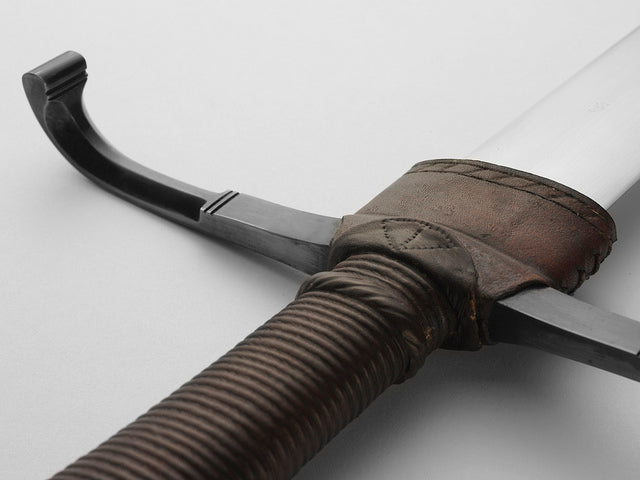Your Cart is Empty


Many people assume that a longsword is a specific type of sword, but this isn't necessarily true. The term "longsword" generally refers to any sword with a medium-to-long length blade. While that covers dozens of different sword types, there are a few other characteristics worth noting. So, if you're interested in learning more about longswords, keep reading.
Longsword Characteristics
The first defining characteristic of a longsword is the blade length, with most longswords featuring a 33 to 43-inch blade (85 to 110 cm). This relatively long blade length offered a unique combination of strength and agility. Warriors wielding a longsword could easily engage foes while also maintaining high level of defense. For these reasons and others, longswords were often preferred.
In addition to a long blade, longswords are also characterized by their cruciform hilt. In other words, the hilt between the sword's blade and handle was shaped like a cross. Some people assume this cruciform hilt was added for religious purposes, though historians believe it served a functional purpose: warriors used the longsword's cross-shaped hilt to parry attack. The hilt would catch the incoming attack, protecting the warrior's body from injury.
Perhaps the most distinguishable characteristic of a longsword isn't the blade length nor the cruciform hilt but rather its long grip. A typical European longsword would often feature a 6 to 11-inch grip (16 to 28 cm), allowing for two-handed use. This was important because two-handed swords were more effective against armored foes than single-handed swords -- and many warriors during this era wore armor.
European Origins
Historically speaking, true longswords originated from Europe during the medieval and Renaissance periods. It first appeared during the early stages of the Hundred Years' War, during which warriors used it extensively on the battlefield.
There were several different types of European longswords created during this time, however. The bastard sword, for instance, was a popular variety characterized by an even longer blade and handle. It was often preferred for use against armored foes, as it provided additional stopping power when compared to swords with a shorter blade and handle.
The longsword remained a popular choice of weaponry through the Renaissance period (1550), after which it began to fade. Today, most longswords are purchased and owned as collectibles or for use in martial arts. Modern longswords lack the appeal as katanas and other traditional Japanese swords, though they still hold significant historic value.
Photo credit: Søren Niedziella